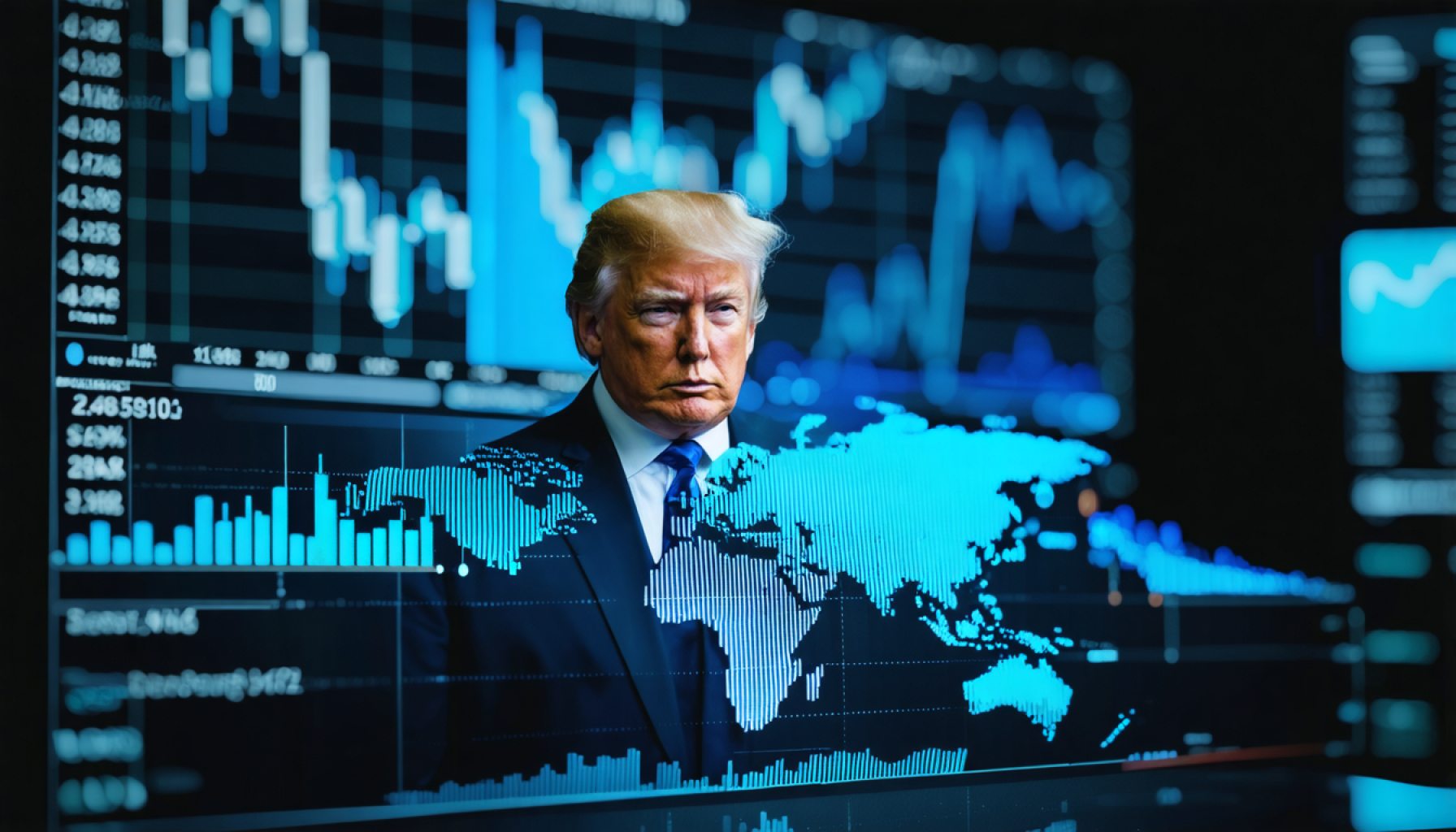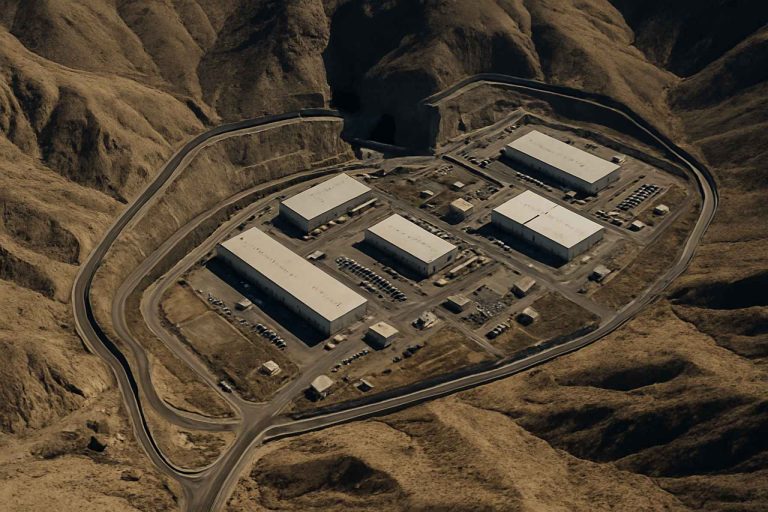
- The Dow plummeted over 1,200 points as global markets reacted nervously to new U.S. tariffs.
- The Trump administration’s tariffs aim to boost American manufacturing by addressing trade deficits.
- Concerns arise over potential trade wars disrupting global economic growth and supply chains.
- Trump remains confident despite market volatility, viewing tariffs as necessary economic corrections.
- Skeptics question whether these tariffs will rejuvenate the economy or trigger instability.
- The introduction of a 10% tariff on imports signals the beginning of possibly deeper trade conflicts.
- Investors closely watch unfolding events to gauge the long-term impact on global markets.
- Amid economic uncertainty, global trade negotiations become increasingly urgent.
Amid a dramatic backdrop of plummeting stock futures, highlighted by the Dow diving over 1,200 points, the financial heartbeat of Wall Street races nervously. Investors brace for impact as an economic storm sweeps across the floors of global stock exchanges—a result of the Trump administration’s bold declaration of hefty tariffs. These tariffs, touted as a remedy to revitalize America’s manufacturing heartland, have unexpectedly sent the markets spiraling into an alarming nosedive.
President Trump, returning to a chilly Washington from his warm Mar-a-Lago retreat, defends the volatile maneuver with unwavering conviction. He likens the tariffs to a bitter medicine necessary to correct the long-standing economic ailments inflicted by “stupid leadership” that, in his view, allowed other nations to siphon away American prosperity. Dominating his rhetoric is a fierce resolve to upend the trade deficits with economic giants like China and the European Union, asserting that the tariffs are a pivotal step toward hammering out a new era of equitable trade.
Yet, as the global market teeters on the brink, skeptics question whether such dramatic fiscal measures are a strategic masterstroke or a risky gamble courting catastrophe. Investors and analysts are left to ponder the implications—will these tariffs reshape the competitive landscape or sow seeds of economic instability?
The freshly minted 10% tariff on all imports marks merely the beginning. With the promise of even steeper reciprocal tariffs set to escalate tensions further, the world watches with bated breath. The potential for a trade war looms large, raising fears that these moves might dampen global economic growth and disrupt intricate supply chains that bind nations together in an era of technocratic interdependence.
Trump remains unfazed by the storm clouds brewing over Wall Street. As Monday dawns, traders brace for a potentially bruising day, weighing the long-term costs of such aggressive economic policies. The Diplomacy of Trade, once laden with intricate negotiations, is temporarily replaced by a more combative approach. Numerous world leaders express eagerness to make deals, suggesting that behind the scenes, conversations buzz with the urgency of averting a full-blown trade crisis.
This unfolding narrative, set against a backdrop of anxious market recalibration, poses a critical takeaway—the path toward economic renewal is fraught with complex challenges and significant risks. The coming days will test the resilience of America’s economic policy decisions against a volatile global landscape, leaving investors and citizens alike to watch and wonder what tomorrow will bring.
As the dust settles on this tumultuous chapter, one thing remains clear—uncertainty is the market’s current dictator, and the world remains at the mercy of untethered economic forces.
Trade Wars and Market Volatility: What You Need to Know Now
Introduction: The Tariff Turmoil and Its Global Impact
The implementation of hefty tariffs, as announced by the Trump administration, has sent global stock markets reeling. Amidst this financial turbulence, the Dow’s plunge by over 1,200 points stands as a testament to the sheer uncertainty gripping Wall Street. These tariffs are aimed at revitalizing U.S. manufacturing and addressing trade deficits, but they simultaneously threaten to ignite a full-blown trade war, putting global economic stability at risk.
Key Insights and Analysis
1. Understanding Tariffs and Their Economic Implication
– Tariffs Explained: Tariffs are taxes imposed on imports to make foreign goods more expensive, ideally encouraging consumers to buy domestic products. The recently imposed 10% tariffs are designed to address and correct perceived trade imbalances.
– Economic Consequences: While intended to boost domestic industries, tariffs can increase costs for companies that rely on imported materials, leading to higher prices for consumers and potential inflationary pressures.
2. Exploring Strategic Intentions and Economic Ramifications
– Trade Deficits: The tariffs specifically target trade partners like China and the EU, which the administration believes contribute to the U.S.’s substantial trade deficits.
– Potential Benefits and Risks: Supporters argue tariffs could bolster American industries and create jobs, but critics warn of retaliatory measures from affected countries, which could lead to a destructive cycle impacting global economic growth.
3. The Risk of a Trade War
– Global Reactions: Countries affected by U.S tariffs may impose their own in response, affecting international trade relations.
– Market Volatility: As demonstrated by the Dow’s substantial drop, investor confidence is markedly shaken, highlighting the uncertainty that tariffs bring to financial markets.
Pressing Questions Addressed
– What Are the Long-Term Effects? Financial analysts predict continued market oscillations, emphasizing that ongoing negotiations will be pivotal in determining long-term economic outcomes.
– How Will This Affect the Average Consumer? Tariffs may lead to increased prices on goods as companies pass on higher import costs to consumers, directly affecting household budgets.
Actionable Recommendations and Quick Tips
– Diversify Investments: In times of market volatility, diversify your investment portfolio to buffer against drastic fluctuations.
– Stay Informed: Keep abreast of trade negotiations and financial news to anticipate market movements and make informed decisions.
– Budget for Rising Costs: Consumers should prepare for potential price increases on goods and services, adjusting personal budgets accordingly.
Conclusion: Navigating Uncertain Waters
As the tariff story unfolds, stakeholders from investors to policymakers face complex challenges amid an unpredictable global landscape. The potential for cascading economic effects demands strategic navigation and informed decision-making to mitigate risks and capitalize on emerging opportunities.
For further insights into global trade and economic policy, explore Forbes for comprehensive analysis and expert opinions.



